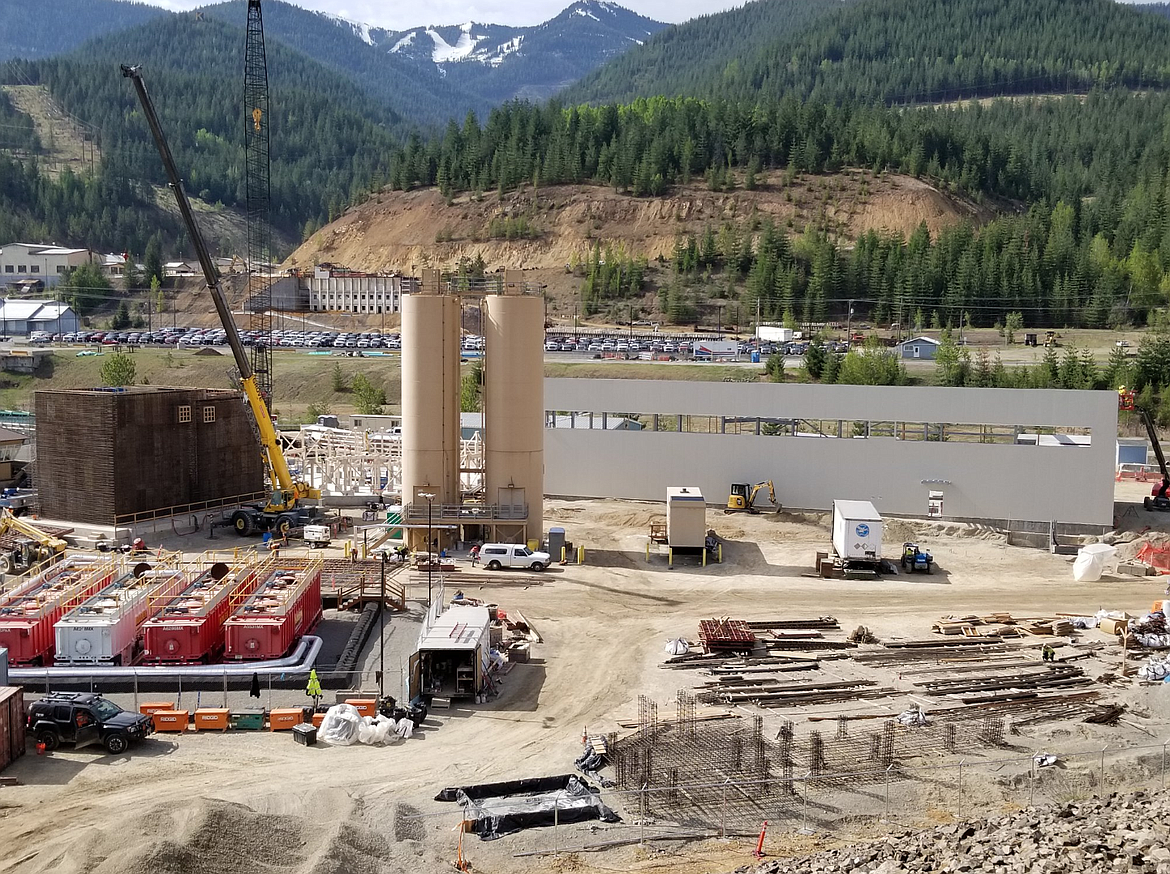Superfund projects moving right along into summer
COEUR d’ALENE — The Environmental Protection Agency hosted its annual media update at its field office in Coeur d’Alene.
Among the presenters were Sheryl Bilbrey, Andy Helkey, Dan McCracken, Dan Meyer, Rod Zion and Terry Harwood.
While each presenter canvassed a different aspect of the ongoing cleanup work in and around the Bunker Hill Superfund Site, they all tied into one another in various ways.
Zion, with the Army Corps of Engineers gave a brief update on the work at Kellogg’s Central Treatment Plant including: construction of the Soil Bentonite Cutoff Wall, Groundwater Collection System progress and construction of the new Sludge Impoundment Area.
According to Zion, the entire project is roughly 50 percent complete and could be wrapped up later this fall.
“Unlike the old treatment plant, the new treatment plant will treat the water flowing out of the Bunker Hill and the groundwater that is collected,” Zion said.
Idaho Department of Environmental Quality project manager Dan McCracken ran through an overview on the continuation of the Paved Roads Project, as well as the Government Gulch
Limited Use Repository Closure and Superfund Redevelopment Initiative.
Dan Meyer with the Coeur d’Alene Trust gave an overview of the upcoming work that he and his group will be handling outside The Box.
While most of their work will happen up Nine Mile Canyon and Burke Canyon, they have many other projects in the region, including four remedy protection projects.
“We have four projects that we’ll be wrapping up this year,” Meyer said. “The Tiger Creek, Gem, Star Parking Area and Black Cloud remedy protection projects. This will be our last year of remedy protection, which is great because we have a lot of other projects to get to.”
Andy Helkey with the Panhandle Health District, spoke at length about the efforts that have gone into making sure that local recreational hot spots have the proper signage to warn folks about possible contaminants where they are recreating.
Helkey also discussed how the thinking among locals has recently changed in regard to learning and understanding their local history.
“We used to have to work very hard and seek out groups who would allow us to talk to them,” Helkey said. “Now we are being sought out by local groups to give them a historical perspective on the area and what is now being done to fix it.”
The EPA’s Region 10 cleanup office director Sheryl Bilbrey wrapped the meeting up by discussing how these different departments and offices must work symbiotically if they are going to complete their project.
“You can see the coordination that goes on with everyone and the great work that is being done,” Bilbrey said. “A lot has been accomplished, we have a lot to do, but the results are showing up in the lowered lead levels.”

